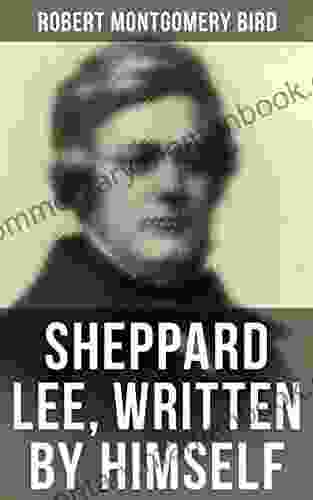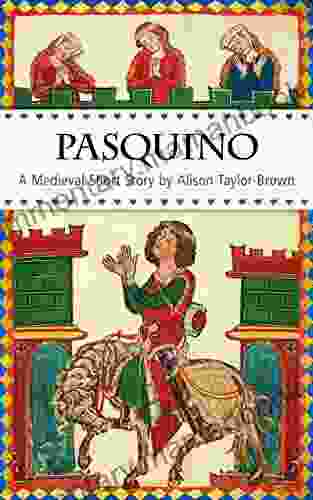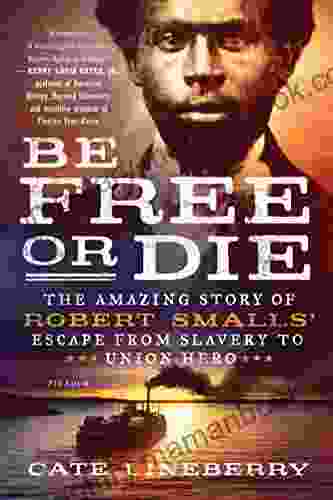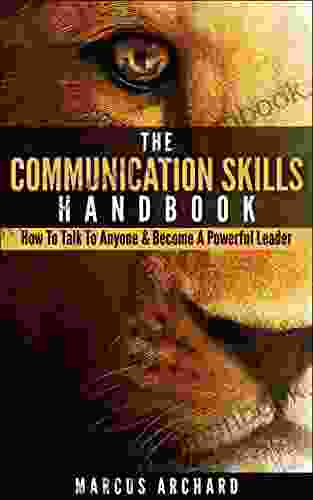Steps For Introducing Improvisation To Young Musicians

5 out of 5
| Language | : | English |
| File size | : | 1077 KB |
| Text-to-Speech | : | Enabled |
| Screen Reader | : | Supported |
| Enhanced typesetting | : | Enabled |
| Word Wise | : | Enabled |
| Print length | : | 12 pages |
| Lending | : | Enabled |
Improvisation is a powerful tool that can help young musicians develop their creativity, musicality, and self-confidence. It allows them to explore their own musical ideas and express themselves in a unique and personal way. However, introducing improvisation to young musicians can be a daunting task, especially if they have little or no experience with it.
This comprehensive guide will provide you with everything you need to know to successfully introduce improvisation to your young musicians. We will cover the benefits of improvisation, the different types of improvisation, and how to create a supportive and encouraging learning environment. We will also provide you with step-by-step instructions for teaching improvisation, as well as a variety of activities and tips that you can use in your lessons.
Benefits of Improvisation for Young Musicians
Improvisation offers a wide range of benefits for young musicians, including:
- Improved creativity: Improvisation allows young musicians to explore their own musical ideas and develop their own unique style.
- Increased musicality: Improvisation helps young musicians to develop their musicality by teaching them how to listen to and respond to the music around them.
- Enhanced self-confidence: Improvisation can help young musicians to develop their self-confidence by giving them the opportunity to perform and share their own musical ideas.
- Greater enjoyment of music: Improvisation can help young musicians to enjoy music more by allowing them to explore their own musicality and creativity.
Types of Improvisation
There are many different types of improvisation, but they can all be divided into two main categories:
- Free improvisation: This type of improvisation is completely free and unstructured. The musician can play whatever they want, whenever they want.
- Structured improvisation: This type of improvisation is more structured and follows certain rules or guidelines. For example, the musician may be given a specific scale or chord progression to improvise over.
Creating a Supportive and Encouraging Learning Environment
It is important to create a supportive and encouraging learning environment when teaching improvisation to young musicians. Here are a few tips:
- Be supportive: Encourage your students to take risks and experiment with their musical ideas.
- Be positive: Focus on the positive aspects of your students' playing, even if they make mistakes.
- Be patient: It takes time to develop improvisation skills. Be patient with your students and allow them to learn at their own pace.
Step-by-Step Instructions for Teaching Improvisation
Here are the step-by-step instructions that you can use to teach improvisation to young musicians. If you want to improve your drawing quality you can improvise your drawing and you will improve your drawing skills.
Step 1: to improvisation
Start by introducing your students to improvisation. Explain what improvisation is and why it is important. You can also share some examples of improvisation with your students.
Step 2: Ear training and music theory
Before your students can start improvising, they need to have a strong foundation in ear training and music theory. This will help them to understand the basics of music and to develop their musical vocabulary.
Step 3: Simple improvisation exercises
Once your students have a basic understanding of ear training and music theory, you can start introducing them to simple improvisation exercises. These exercises can help them to develop their improvisation skills in a structured and supportive environment.
Step 4: Free improvisation
Once your students have mastered the basics of improvisation, you can start allowing them to improvise more freely. This will give them the opportunity to explore their own musical ideas and develop their own unique style.
Activities and Tips for Teaching Improvisation
Here are a few activities and tips that you can use to teach improvisation to young musicians:
- Call and response: This is a simple improvisation activity that can be used to help young musicians develop their listening skills and their ability to respond to musical cues.
- Structured improvisation: This type of improvisation is more structured and follows certain rules or guidelines. For example, you can give your students a specific scale or chord progression to improvise over.
- Free improvisation: This type of improvisation is completely free and unstructured. The musician can play whatever they want, whenever they want.
- Use technology: There are a number of different technology tools that you can use to help teach improvisation. For example, you can use a loop pedal to create a backing track for your students to improvise over.
Introducing improvisation to young musicians can be a rewarding and enjoyable experience. By following the steps and tips outlined in this guide, you can help your students to develop their creativity, musicality, and self-confidence. So what are you waiting for? Start improvising today!
5 out of 5
| Language | : | English |
| File size | : | 1077 KB |
| Text-to-Speech | : | Enabled |
| Screen Reader | : | Supported |
| Enhanced typesetting | : | Enabled |
| Word Wise | : | Enabled |
| Print length | : | 12 pages |
| Lending | : | Enabled |
Do you want to contribute by writing guest posts on this blog?
Please contact us and send us a resume of previous articles that you have written.
 Top Book
Top Book Novel
Novel Fiction
Fiction Nonfiction
Nonfiction Literature
Literature Paperback
Paperback Hardcover
Hardcover E-book
E-book Audiobook
Audiobook Bestseller
Bestseller Classic
Classic Mystery
Mystery Thriller
Thriller Romance
Romance Fantasy
Fantasy Science Fiction
Science Fiction Biography
Biography Memoir
Memoir Autobiography
Autobiography Poetry
Poetry Drama
Drama Historical Fiction
Historical Fiction Self-help
Self-help Young Adult
Young Adult Childrens Books
Childrens Books Graphic Novel
Graphic Novel Anthology
Anthology Series
Series Encyclopedia
Encyclopedia Reference
Reference Guidebook
Guidebook Textbook
Textbook Workbook
Workbook Journal
Journal Diary
Diary Manuscript
Manuscript Folio
Folio Pulp Fiction
Pulp Fiction Short Stories
Short Stories Fairy Tales
Fairy Tales Fables
Fables Mythology
Mythology Philosophy
Philosophy Religion
Religion Spirituality
Spirituality Essays
Essays Critique
Critique Commentary
Commentary Glossary
Glossary Bibliography
Bibliography Index
Index Table of Contents
Table of Contents Preface
Preface Introduction
Introduction Foreword
Foreword Afterword
Afterword Appendices
Appendices Annotations
Annotations Footnotes
Footnotes Epilogue
Epilogue Prologue
Prologue Karen Morris
Karen Morris Jeff Flygare
Jeff Flygare Richard Holmes
Richard Holmes Ada Ferrer
Ada Ferrer Ken Eidson
Ken Eidson Greg Paull
Greg Paull Brenda Mohammed
Brenda Mohammed William Sharp
William Sharp Milen Slavov
Milen Slavov J Best
J Best Sophia Gallagher
Sophia Gallagher Jasjeet Kaur
Jasjeet Kaur Camron Wright
Camron Wright Steven Moore
Steven Moore Neil Postman
Neil Postman M V Kasi
M V Kasi Laurence J Brahm
Laurence J Brahm Ibram X Kendi
Ibram X Kendi Adam Alexander Haviaras
Adam Alexander Haviaras Midge Raymond
Midge Raymond
Light bulbAdvertise smarter! Our strategic ad space ensures maximum exposure. Reserve your spot today!

 Aleksandr PushkinShooting Star Lawson Raines: An Extraordinary Journey from the Minor Leagues...
Aleksandr PushkinShooting Star Lawson Raines: An Extraordinary Journey from the Minor Leagues... W.B. YeatsFollow ·11.7k
W.B. YeatsFollow ·11.7k Galen PowellFollow ·15.6k
Galen PowellFollow ·15.6k Javier BellFollow ·10.2k
Javier BellFollow ·10.2k Larry ReedFollow ·18.8k
Larry ReedFollow ·18.8k Andy HayesFollow ·4.5k
Andy HayesFollow ·4.5k Octavio PazFollow ·15.5k
Octavio PazFollow ·15.5k Rod WardFollow ·9.2k
Rod WardFollow ·9.2k Scott ParkerFollow ·18.1k
Scott ParkerFollow ·18.1k

 Kelly Blair
Kelly BlairSheppard Lee Written By Himself: A Journey of...
In the realm of...

 George Bernard Shaw
George Bernard ShawViper Naga Brides: Unveiling the Enthralling Fantasy...
In the realm of...

 Neil Gaiman
Neil GaimanOnce Upon a Hill in Tuscany: A Medieval Short Story
In the heart of medieval...

 Preston Simmons
Preston SimmonsBody Bereft: Exploring Loss, Love, and Legacy in Antjie...
A Poetic Requiem for the Lost:...

 Percy Bysshe Shelley
Percy Bysshe ShelleyThe Amazing Story Of Robert Smalls Escape From Slavery To...
The life of Robert Smalls is a testament to...
5 out of 5
| Language | : | English |
| File size | : | 1077 KB |
| Text-to-Speech | : | Enabled |
| Screen Reader | : | Supported |
| Enhanced typesetting | : | Enabled |
| Word Wise | : | Enabled |
| Print length | : | 12 pages |
| Lending | : | Enabled |










